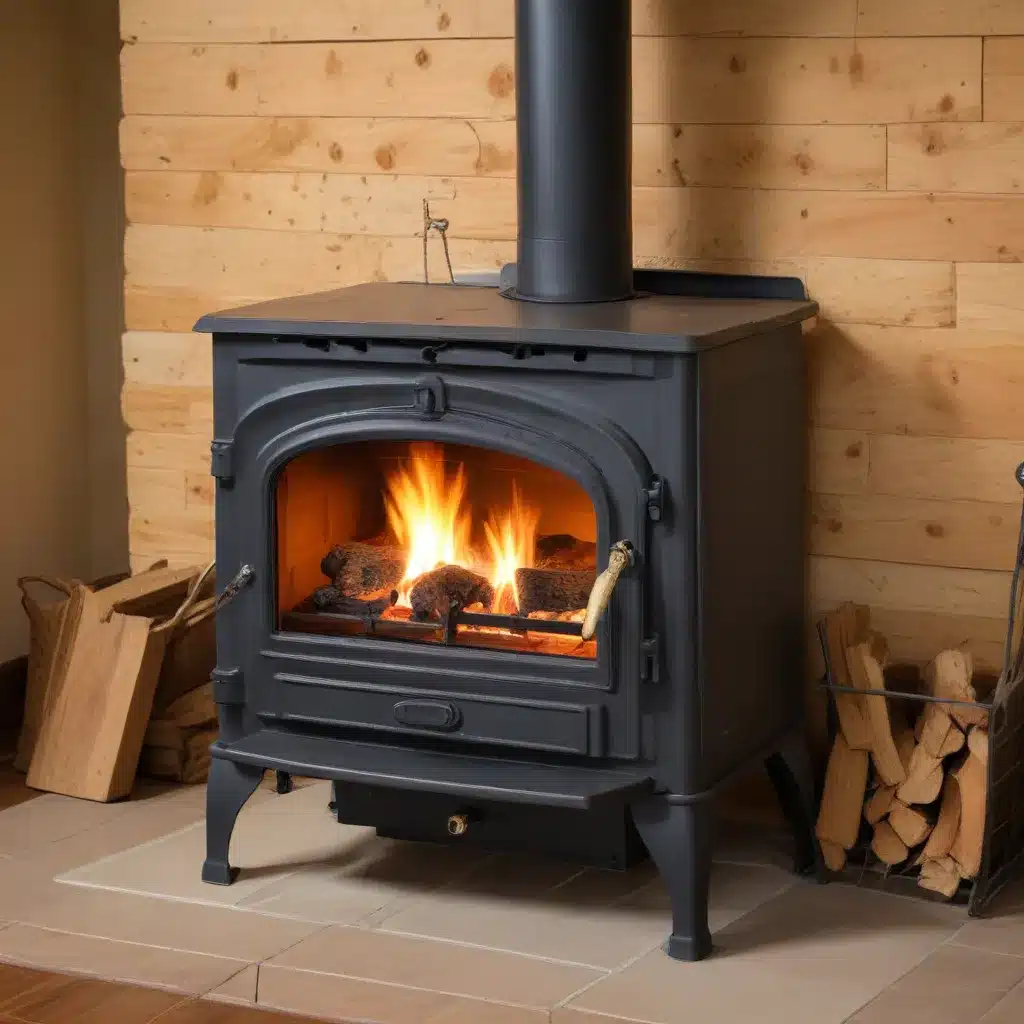
As a seasoned expert in wood stoves and heating solutions, I’m thrilled to share practical tips and in-depth insights to help you maximize the heat output from your wood stove. Whether you’re a new homeowner or a seasoned wood stove enthusiast, this comprehensive guide will equip you with the knowledge to optimize your system for greater efficiency, warmth, and energy savings.
Mastering the Chimney: The Key to Airflow
One of the most crucial factors in achieving maximum heat output from your wood stove is ensuring proper airflow through your chimney. Just like an engine requires clean oil and fresh fuel to operate at peak performance, your wood stove relies on a well-maintained chimney for optimal efficiency.
Keeping the Chimney Clean
Regularly cleaning your chimney is not only a safety precaution to prevent chimney fires, but it can also significantly improve the airflow and overall performance of your wood stove. Consider investing in a specialized chimney cleaning tool, such as the drill attachment mentioned in the sources, to make this essential task easier and more thorough.
Maximizing Airflow
Efficient airflow is the lifeblood of a wood stove’s heat production. Ensure that your chimney is free of obstructions, creosote buildup, and any other factors that could impede the natural draft. By maintaining a clean and clear chimney, you’ll unlock the full potential of your wood stove, allowing it to burn more efficiently and generate greater heat output.
Fuel Selection: The Importance of Seasoned Firewood
As the sources rightly point out, burning seasoned firewood is crucial for achieving maximum heat output from your wood stove. Freshly cut or “green” wood burns inefficiently, producing excessive smoke and wasting valuable energy that could be used to heat your home.
The Benefits of Seasoned Wood
Seasoned firewood, which has had at least a full year to dry out, burns hotter and more efficiently than green wood. This translates to longer-lasting fires, reduced creosote buildup in your chimney, and a more consistent, reliable heat output from your wood stove.
Proper Wood Storage
To ensure your firewood is properly seasoned, it’s essential to have a dedicated storage area near your wood stove. This allows the wood to continue drying and reach optimal moisture content before being burned, further enhancing its heat-producing capabilities.
Harnessing the Power of Fans
Incorporating fans into your wood stove setup can be a game-changer in distributing heat throughout your living space. By utilizing heat-powered fans or strategically placed electric fans, you can efficiently circulate the warm air and maximize the heat output from your wood stove.
Heat-Powered Fans
Heat-powered fans, such as the EcoFan mentioned in the sources, are a convenient and eco-friendly solution. These fans harness the heat generated by your wood stove to power their operation, eliminating the need for batteries or electricity.
Strategically Placed Electric Fans
Positioning electric fans, like traditional box fans, can also be an effective way to distribute the heat from your wood stove. Consider placing a fan at the end of a long hallway, aimed towards the stove, to create a natural air circulation pattern that pushes the warm air throughout your home.
Thermal Mass: The Power of Fire Bricks
Incorporating fire bricks near your wood stove can be a simple yet highly effective way to enhance its heat output and efficiency. These bricks act as a thermal mass, absorbing and storing heat throughout the day, and then slowly releasing it even after the fire has gone out.
The Benefits of Fire Bricks
By strategically placing fire bricks around your wood stove, you create a heat reservoir that can continue to radiate warmth long after the initial fire has burned down. This can extend the overall heating time and provide a more consistent, even heat distribution in your living space.
Efficient Wood Stove Operation
The way you operate your wood stove can have a significant impact on its heat output and efficiency. By minimizing unnecessary door openings and adjusting the airflow, you can optimize the performance of your specific wood stove model.
Minimizing Door Openings
As the sources suggest, limiting the number of times you open your wood stove’s door can help preserve the built-up heat and maximize its radiant warmth. Each time you open the door, you lose a substantial amount of the accumulated heat, so try to resist the temptation to constantly check on the fire.
Adjusting Airflow
Every wood stove has its own unique “personality” and requires a different approach to airflow management. Experiment with adjusting the airflow controls, such as dampers or air intake vents, to find the optimal settings for your specific model. By fine-tuning the airflow, you can achieve a longer-lasting, more efficient burn that delivers maximum heat output.
Conclusion
By implementing the tips and insights outlined in this comprehensive guide, you’ll be well on your way to optimizing your wood stove for maximum heat output. From maintaining a clean chimney and using seasoned firewood to leveraging fans and thermal mass, each of these strategies can contribute to a more efficient and comfortable heating experience in your home.
Remember, every wood stove is unique, so it’s essential to familiarize yourself with the specific features and quirks of your model. Experiment, observe, and make adjustments as needed to find the perfect balance that suits your heating needs and preferences.
For more information and resources on wood stoves, fireplace maintenance, and sustainable heating solutions, be sure to explore the wealth of information available on https://woodstoveheaters.com/. Happy heating!


